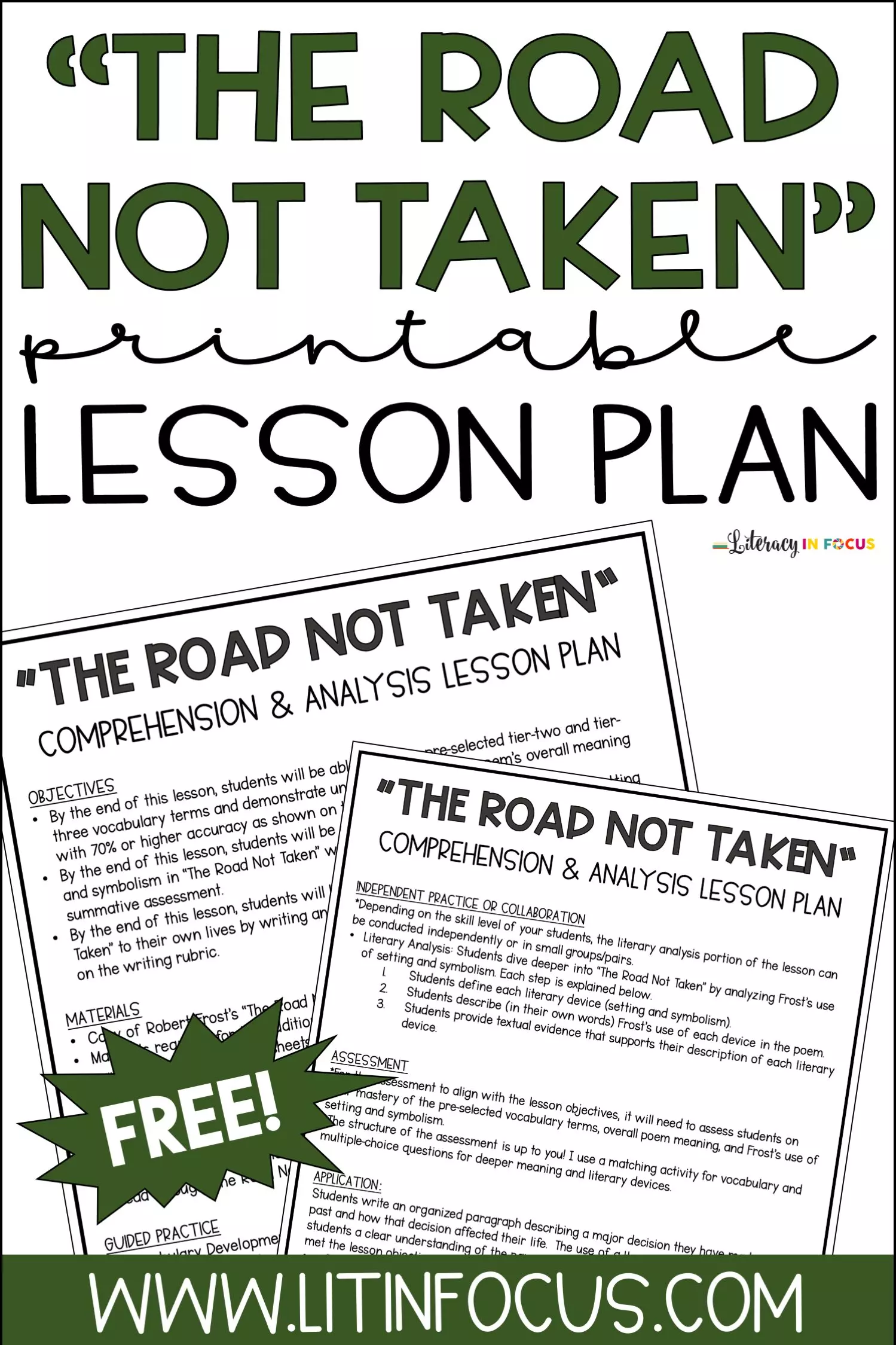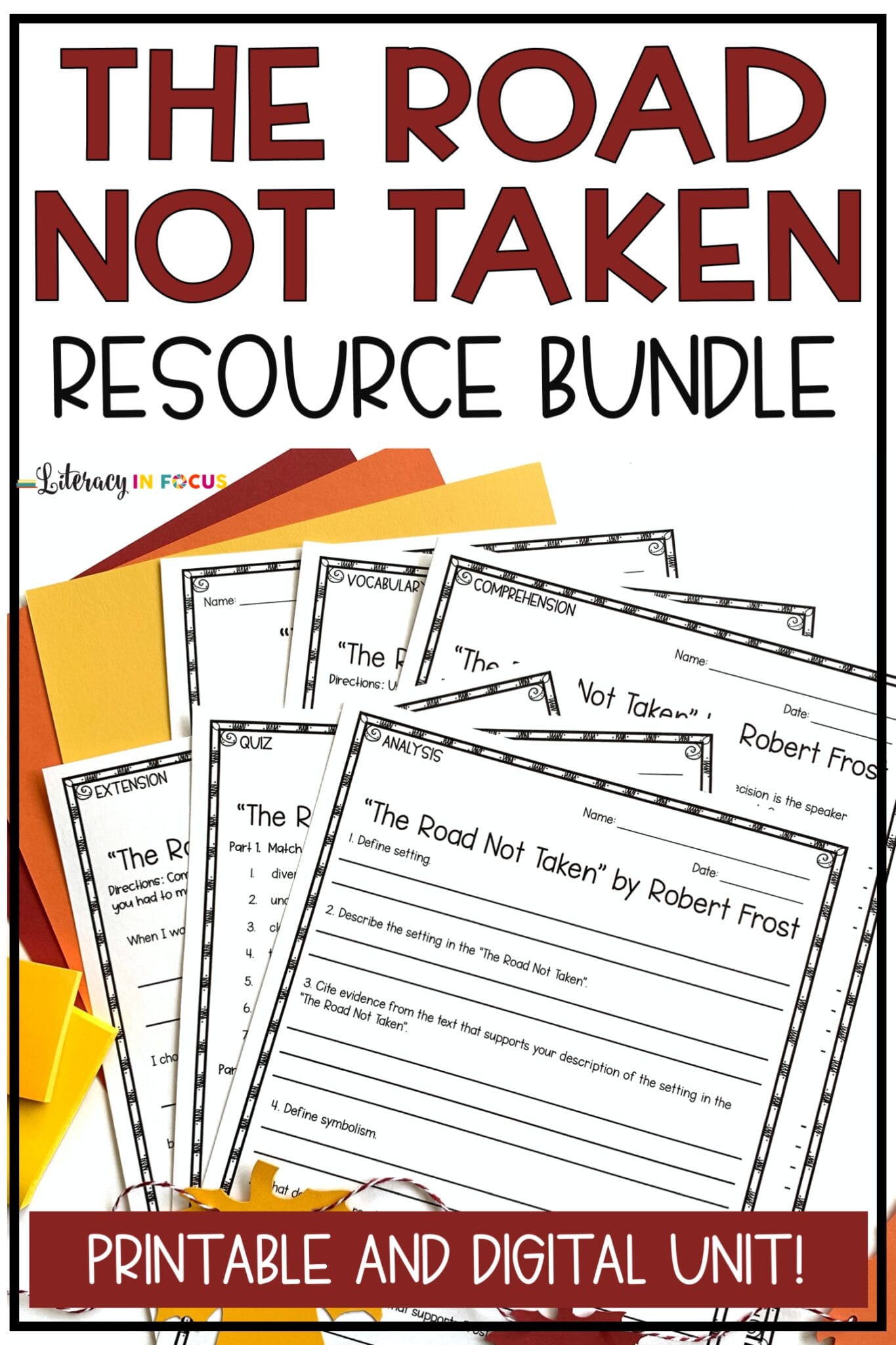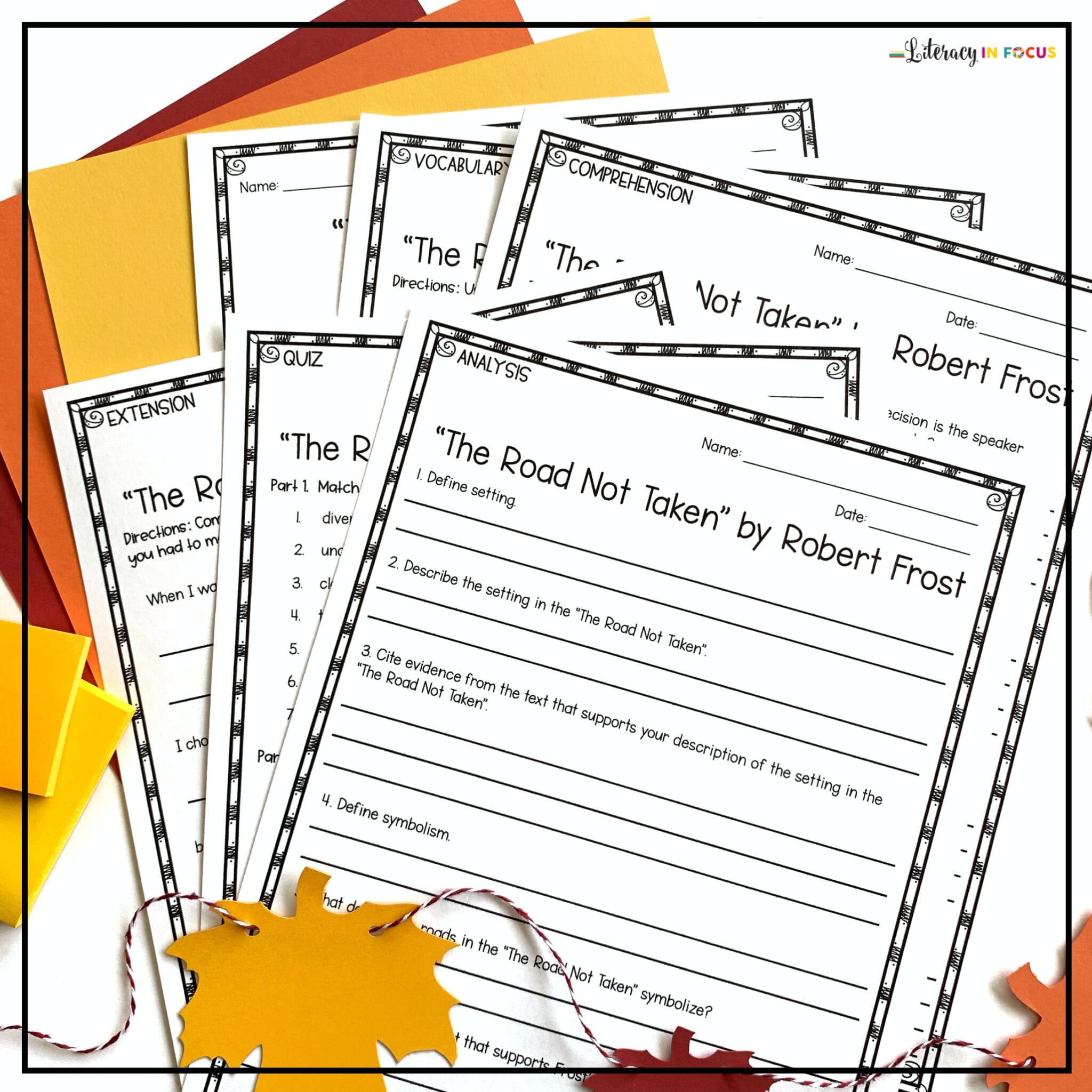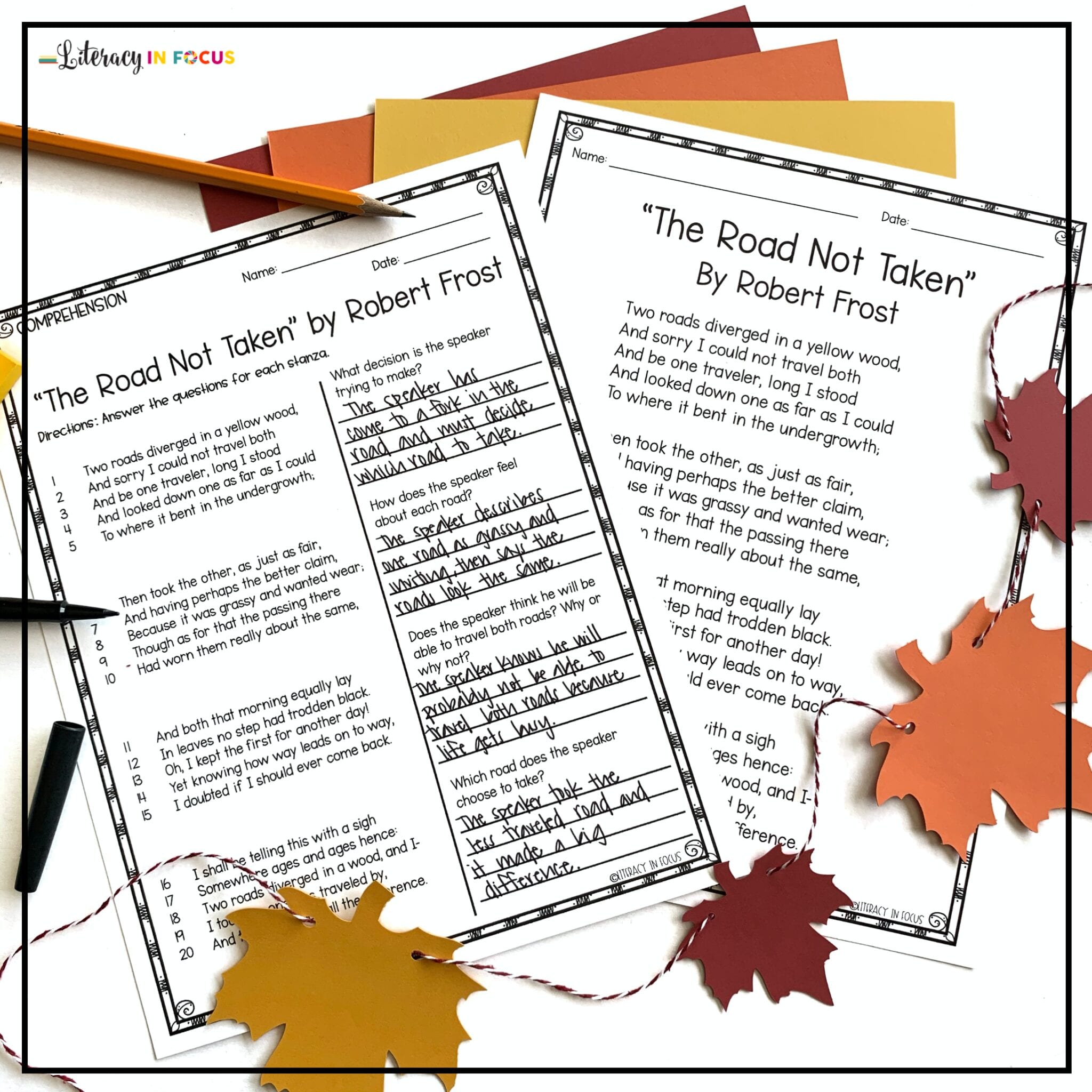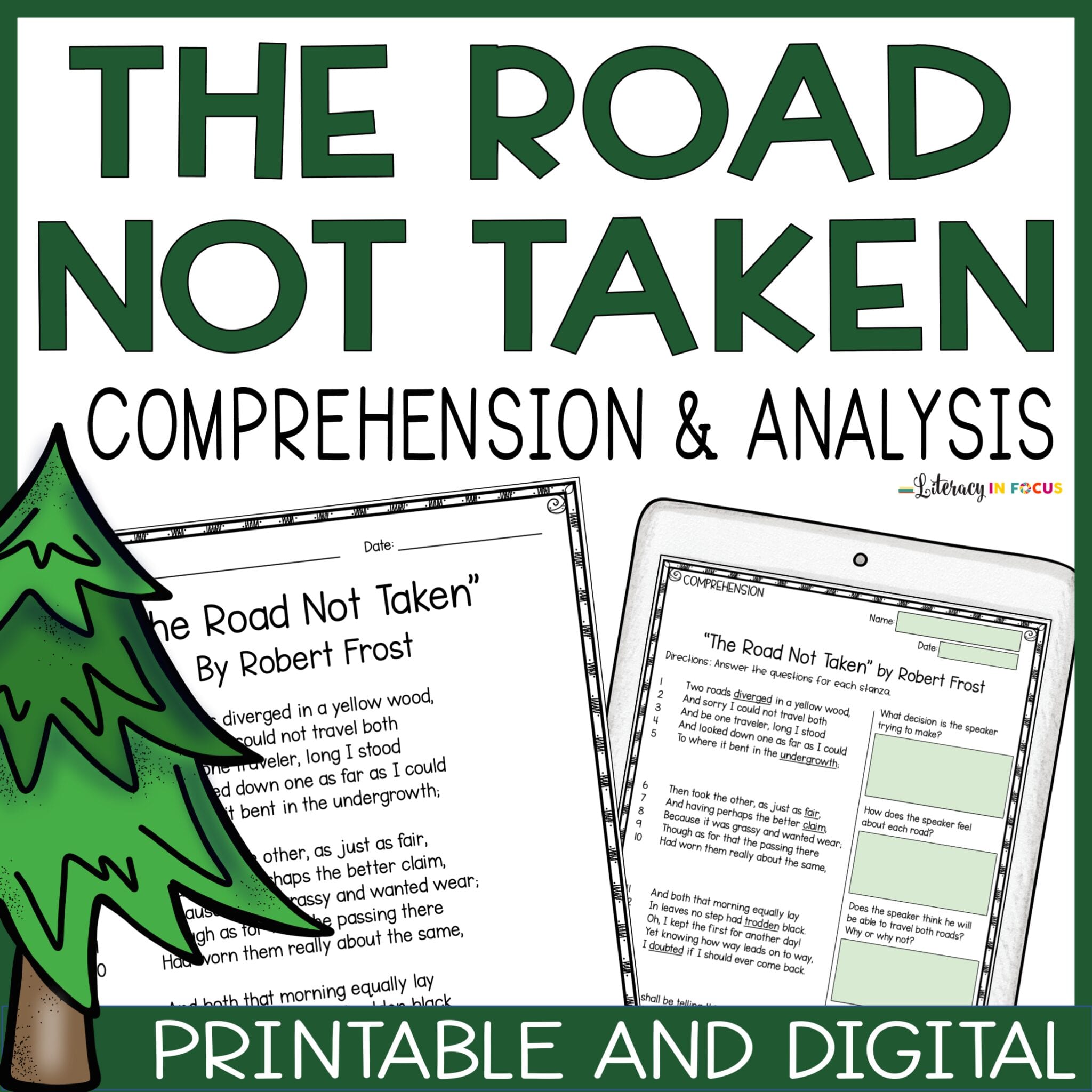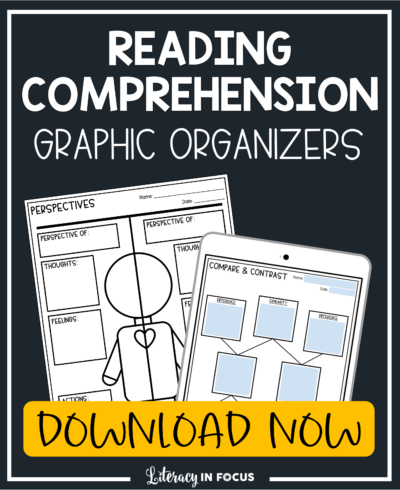Robert Frost’s “The Road Not Taken” Lesson Plan
This Common Core aligned poetry lesson includes vocabulary development, text-based questioning, literary analysis, assessment, and a culminating writing task to ensure student understanding of “The Road Not Taken” by Robert Frost. As you will see, learning is scaffolded throughout the lesson, giving students a chance to build a solid foundation with the poem before progressing into deeper critical thinking skills. Ideas for differentiation and/or scaffolding are provided at the bottom of this post.
OBJECTIVES
- By the end of this lesson, students will be able to define pre-selected tier-two and tier-three vocabulary terms and demonstrate understanding of the poem’s overall meaning with 70% or higher accuracy as shown on the summative assessment.
- By the end of this lesson, students will be able to identify and explain the use of setting and symbolism in “The Road Not Taken” with 70% or higher accuracy as shown on the summative assessment.
- By the end of this lesson, students will be able to apply the meaning of “The Road Not Taken” to their own lives by writing an organized paragraph that scores a three or higher on the writing rubric.
MATERIALS
- Copy of Robert Frost’s “The Road Not Taken”
- Materials required for the additional lesson components will vary based on your needs. You can create your own worksheets or have students write on their own paper. *Optional: Click here to download the printable and digital “The Road Not Taken” teaching materials that correspond with this lesson from Literacy in Focus on TpT.
ANTICIPATORY SET
- Discuss with students the meaning of “coming to a fork in the road”.
- Read through “The Road Not Taken” together as a class.
GUIDED PRACTICE
- Vocabulary Development: Identify 1 or 2 tier-two and tier-three words (click here to read more about vocabulary tiers) in each stanza that your students will identify using context clues. Ideally, the words you choose will assist students in determining the poem’s meaning. I use the following words: stanza 1: diverged, undergrowth; stanza 2: fair, claim; stanza 3: trodden, doubted; stanza 4: hence
- Text-Based Questioning: Extrapolate meaning from each stanza of the poem by guiding students through a series of text-based questions. I use the following questions:
Stanza 1: What decision is the speaker trying to make?
Stanza 2: How does the speaker feel about each road?
Stanza 3: Does the speaker think he will be able to travel both roads? Why or why not?
Stanza 4: Which road does the speaker choose to take?
INDEPENDENT PRACTICE OR COLLABORATION
- Depending on the skill level of your students, the literary analysis portion of the lesson can be conducted independently or in small groups/pairs.
- Literary Analysis: Students dive deeper into “The Road Not Taken” by analyzing Frost’s use of setting and symbolism. Each step is explained below.
Students define each literary device (setting and symbolism).
Students describe (in their own words) Frost’s use of each device in the poem.
Students provide textual evidence that supports their description of each literary device.
ASSESSMENT
- For the assessment to align with the lesson objectives, it will need to assess students on their mastery of the pre-selected vocabulary terms, overall poem meaning, and use of setting and symbolism.
- The structure of the assessment is up to you! I use a matching activity for vocabulary and multiple choice questions for deeper meaning and literary devices.
APPLICATION
- Students write an organized paragraph describing a major decision they have made in the past and how that decision affected their life. The use of a 4-point grading rubric will give students a clear understanding of the paragraph expectations and ensure that they have met the lesson objective. I use the following criteria in my grading rubric:
The decision is clearly stated.
A reason for making the decision is included.
The impact of the decision is explained.
Paragraph is organized and logical.
Grammar and spelling are used correctly.
DIFFERENTIATION OR SCAFFOLDING
- Vocabulary: Provide students with a visual representation of each pre-selected vocabulary word.
- Text-Based Questioning: As you go through each text-based question, have students underline the answer within the poem. That way, the question and answer are connected with textual evidence.
- Literary Analysis: Show students a picture of a forest and discuss the different elements they see. Show students pictures of common symbols and discuss the deeper meaning behind each symbol. You can also provide examples of setting and symbolism from other stories or poems before analyzing the use of each in “The Road Not Taken”.
- Writing: Provide students with a cloze paragraph that outlines the basic structure of the writing task.
COMMON CORE STANDARDS
- CCSS.ELA-LITERACY.CCRA.R.1: Read closely to determine what the text says explicitly and to make logical inferences from it; cite specific textual evidence when writing or speaking to support conclusions drawn from the text.
- CCSS.ELA-LITERACY.CCRA.R.2: Determine central ideas or themes of a text and analyze their development; summarize the key supporting details and ideas.
- CCSS.ELA-LITERACY.CCRA.R.3: Analyze how and why individuals, events, or ideas develop and interact over the course of a text.
- CCSS.ELA-LITERACY.CCRA.R.4: Interpret words and phrases as they are used in a text, including determining technical, connotative, and figurative meanings, and analyze how specific word choices shape meaning or tone.
- CCSS.ELA-LITERACY.CCRA.R.5: Analyze the structure of texts, including how specific sentences, paragraphs, and larger portions of the text (e.g., a section, chapter, scene, or stanza) relate to each other and the whole.
Click here to download the PRINTABLE and DIGITAL “The Road Not Taken” poetry lesson from Literacy in Focus on TpT. Everything detailed in this lesson plan is included!
“This resource provided each step to scaffold understanding for my struggling learners. I love how the poem is a classic, and yet the students found it very approachable.” -TG INSPIRED ELA
